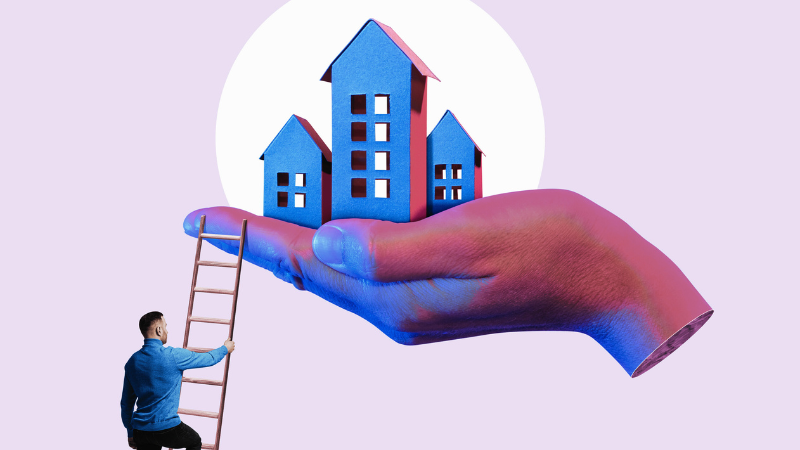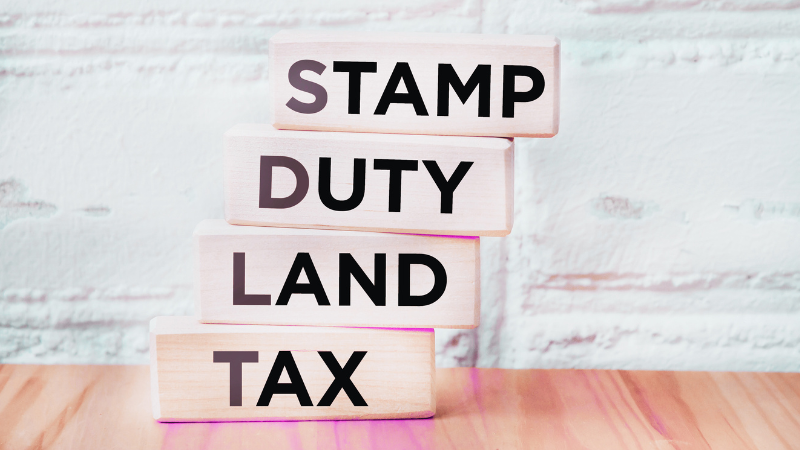Commercial Mortgage Basics: Essential Facts You Must Know
Commercial mortgages require significantly higher deposits than residential loans, typically around 30% of the property’s value. Unlike standard home loans, these financial products are specifically designed for businesses looking to purchase premises or investment properties.
When exploring commercial mortgage rates, you’ll find they tend to be higher than residential options due to increased lender risk. Furthermore, terms can vary considerably, with repayment periods ranging from just one year to as long as 30 years, though the average sits at approximately 15 years. Importantly, many lenders establish minimum borrowing thresholds, with some setting the floor at £75,000, while others begin at £25,001. Before applying, you should consider using a commercial mortgage calculator to understand potential costs and repayments based on these variables.
This comprehensive guide will walk you through everything you need to know about commercial mortgages, from basic definitions to eligibility requirements, helping you make informed decisions about financing your business property.
What is a Commercial Mortgage?
A commercial mortgage serves as a specialised loan secured against business property such as office buildings, shopping centres, industrial warehouses, or apartment complexes. This financial instrument primarily helps businesses acquire, refinance, or redevelop commercial property rather than residential dwellings.
Definition and how it works
At its core, a commercial mortgage functions as a property finance solution designed for companies purchasing land or buildings for business purposes. The fundamental structure mirrors residential mortgages—you pay a deposit upfront, followed by monthly repayments with interest over an agreed term. However, commercial mortgages are specifically tailored to meet both borrower and lender requirements in the business context.
The application process typically begins with completing financial position documentation. Subsequently, you’ll submit a full mortgage application detailing your business structure, income, and financial history. The lender then arranges a professional property valuation and conducts thorough legal due diligence, checking titles, leasehold arrangements, and potential planning issues.
Commercial mortgages include several key terms worth understanding:
- Loan amount (sometimes called ‘loan proceeds’)
- Interest rate (fixed or variable)
- Term (maturity period)
- Amortisation schedule
- Prepayment flexibility options
An important distinction is that although commercial mortgages frequently amortise over the term (meaning you pay both interest and principal), they often don’t fully amortise by the end of the stated period. Consequently, many conclude with a substantial balloon payment of the remaining balance, which borrowers typically address through refinancing.
How it differs from residential mortgages
Commercial and residential mortgages share the basic principle of borrowing money to purchase property. Nevertheless, several significant differences exist between these financial products.
First and foremost, the purpose separates these mortgage types. Whereas residential mortgages finance homes for personal occupation, commercial mortgages fund properties intended for business activities or commercial investment. Additionally, commercial mortgages cover a much broader range of property types, including retail spaces, offices, warehouses, and leisure complexes.
The assessment criteria also differ considerably. Residential mortgage applications are evaluated primarily on personal credit history, income, and debt-to-income ratio. In contrast, commercial mortgage lenders focus more intently on:
- The property’s income potential
- Your business experience
- Overall financial strength
- Available security
Moreover, commercial mortgages generally operate on shorter timeframes. While residential mortgages can extend to 25-30 years, commercial options typically range from 1-15 years. The maximum borrowing limit also varies, with commercial mortgages usually offering up to 65-70% loan-to-value ratio, compared to residential mortgages which can reach 95%.
Interest rates represent another key distinction. Commercial mortgage rates are consistently higher than residential counterparts because lenders consider them higher risk investments. Furthermore, regulatory oversight differs—the Financial Conduct Authority (FCA) regulates residential mortgages to ensure transparent and fair lending practises, while commercial mortgages enjoy greater flexibility but provide less borrower protection.
Finally, commercial mortgages rarely exist as standardised products due to the sheer variety of commercial properties and business circumstances. Each application undergoes individual assessment, requiring more extensive documentation and information than residential mortgage applications.
Types of Commercial Mortgages
Commercial mortgage products come in several distinct forms, each designed for specific business needs and property types. Understanding these options helps you select the most appropriate financing solution for your commercial property investment.
Owner-occupied mortgages
Owner-occupied mortgages are specifically designed for businesses that intend to operate from the property they’re purchasing. These loans enable you to build equity in your business premises rather than paying rent to a landlord.
With these mortgages, you can typically borrow up to 80% of the property value, though some lenders cap this at 75%. For particularly strong applications in certain industries like healthcare, loan-to-value ratios may occasionally reach up to 100%. Interest rates generally range between 2.25% and 6% per annum, with the exact rate depending on your industry, property type, and business financial strength.
Most lenders offer terms between 5 and 25 years, providing flexibility based on your business plans. Notably, these mortgages are available to various business structures including partnerships, UK Limited Companies, and Limited Liability Partnerships.
Commercial buy-to-let mortgages
Commercial buy-to-let mortgages cater to investors purchasing non-residential property to let to third parties. Unlike owner-occupied options, these mortgages focus primarily on the rental income potential of the property.
These mortgage products typically require lenders to examine your business trading history, often requesting at least three years of accounts plus projected future trading figures. Terms generally range from 1 to 30 years, offering considerable flexibility for investment planning.
Importantly, commercial buy-to-let mortgages feature repayment profiles that can be tailored to your needs, including potential repayment holidays. Like other commercial mortgages, they’re secured against the property itself as collateral.
Part-commercial mortgages
Part-commercial (or semi-commercial) mortgages apply to properties with both residential and commercial elements—for instance, a shop with a flat above. These specialist products acknowledge the dual-purpose nature of such properties.
Many lenders offer loans of up to 75% LTV on part-commercial properties, with terms typically ranging from 5 to 25 years. Interest rates may be slightly lower than purely commercial mortgages, reflecting the reduced risk associated with the residential component.
These mortgages suit both owner-occupiers who live and work from the same premises and investors letting both components. Interestingly, the residential element can include HMOs (Houses in Multiple Occupation) and holiday lets.
Fixed vs variable interest rates
Fixed interest rate commercial mortgages provide stability through consistent repayments throughout the agreed term. This predictability makes budgeting straightforward, albeit potentially costlier if interest rates decrease. Currently, fixed rates typically range from approximately 6.35% to 14%.
Conversely, variable rate commercial mortgages track an underlying benchmark—usually the Bank of England base rate or the lender’s standard variable rate. These rates start around 4.60% plus the base rate, making them initially more affordable but subject to fluctuation.
Choosing between these options depends on several factors: your risk appetite, market outlook, and cash flow requirements. Risk-averse borrowers or those needing payment certainty often prefer fixed rates, whereas those expecting interest rates to fall might benefit from variable options.
Each mortgage type offers distinct advantages for different business circumstances, making it essential to carefully evaluate your specific needs before committing to any commercial property financing solution.
Who Can Apply and What You Need
Securing a commercial mortgage requires meeting specific eligibility criteria and providing comprehensive documentation to convince lenders of your reliability as a borrower.
Eligibility criteria for businesses
Most commercial mortgage providers accept applications from several business entities domiciled in the UK, including limited companies, PLCs, Limited Liability Partnerships (LLPs), partnerships, and sole traders. However, many lenders exclude trusts, pension schemes, charities, and clubs/associations.
Age restrictions apply to key individuals within the business. Typically, applicants must be over 18 years old. For trading businesses, key individuals should be under 80 years of age at the end of the loan repayment profile, while for investment cases, this extends to 85 years. Businesses with multiple key individuals may have these limits applied to the youngest person.
Property type eligibility is equally important. Acceptable interests include freehold properties and long leaseholds with a minimum unexpired lease term of the commitment term plus 21 years. In Scotland, feudal (commonhold) property is also acceptable.
Required documents and financials
Preparing thorough documentation beforehand can significantly speed up your application process. For standard applications, you’ll need:
- Basic application information detailing the transaction and people involved
- Assets, liabilities, income and expenditure (ALIE) summary
- 3-6 months’ personal bank statements
- Last 2-3 years’ trading accounts
- 6 months’ business bank statements
- Details of likely changes to future turnover or profit
- Evidence of deposit (for purchases)
- Property portfolio for the borrowing entity
- Direct Debit Mandate
For established businesses, lenders generally request at least two years of audited accounts, though some high street banks may require three years. Newer ventures with limited trading history might qualify with one full year of accounts when applying to Tier 2 and Tier 3 lenders.
Role of credit score and business history
Your credit history plays a pivotal role in commercial mortgage applications since it helps lenders assess lending risk. Most lenders conduct credit searches on both the business entity and key individuals involved.
For sole traders, your personal credit history essentially becomes your business credit history. Partnerships face similar scrutiny, with lenders examining both partners’ personal credit records. Even limited companies with established business credit scores aren’t exempt—lenders still check directors’ and partners’ personal credit histories.
A strong credit score (typically above 80 on Experian’s scale) can lead to better loan terms and lower interest rates. Scores between 40-80 may require additional information, whereas most lenders look for scores above 40 before agreeing to lend.
Some lenders will consider applications with up to three credit-related defaults or CCJs of £500 or less in the last three years, or one default/CCJ exceeding £500. Nevertheless, applications showing current personal or commercial mortgage arrears, or any insolvency proceedings within the past five years, face rejection.
Before applying, check your credit report through agencies like Experian or Equifax to correct any errors. This simple step can enhance your chances of approval at competitive commercial mortgage rates.
Understanding Terms, Rates and Deposits
The financial components of a commercial mortgage deserve careful attention as they directly impact your business’s cash flow and long-term financial health.
Typical loan terms and repayment periods
Commercial mortgages typically offer repayment terms ranging from 3 to 25 years, though some lenders extend this up to 30 years. Most commonly, businesses opt for terms between 10 and 20 years. Shorter terms mean higher monthly payments but lower overall interest, whereas longer terms reduce monthly costs while increasing total interest paid over time.
Repayment profiles come in several forms:
- Capital and interest (repayment mortgages)
- Interest-only (requiring full principal repayment at term end)
- Straight line repayment profiles
Many lenders offer capital repayment holidays (typically up to 24 months), providing breathing space during challenging periods, though interest payments must continue.
Commercial mortgage rates explained
Interest rates for commercial mortgages fall into two main categories:
Fixed rates provide predictability with unchanging repayments throughout the agreed period. These typically run from 2 to 10 years, with rates currently ranging between 6.35% and 14%. Fixed rates protect against market fluctuations but might cost more if base rates decline.
Alternatively, variable rates track external benchmarks such as the Bank of England Base Rate, starting around 4.60% plus the base rate. These rates fluctuate in accordance with market conditions, potentially benefiting borrowers during economic downturns.
Deposit requirements and LTV ratios
Commercial mortgage deposits typically range between 20% and 40% of the property’s value. As a guideline, most lenders request approximately 25%, with the exact amount depending on your business type, trading history, and property location.
Loan-to-Value (LTV) ratio—the percentage of the property value you can borrow—typically maxes out at 75%, though some lenders offer up to 80% for owner-occupied properties. The LTV calculation is straightforward: divide the loan amount by the appraised value. Lower LTVs generally secure more competitive rates and terms.
Using a commercial mortgage calculator
Commercial mortgage calculators help estimate monthly payments and total costs based on several key inputs:
- Loan amount (property value minus deposit)
- Interest rate
- Loan term
- Repayment type
Using these tools provides clarity on potential financial commitments before applying. For instance, on a £500,000 property with a £100,000 deposit at 4% fixed rate over 20 years, you’d face monthly payments of £2,424 and total interest of £181,680. This preliminary understanding helps align mortgage commitments with your business’s cash flow projections.
Risks, Benefits and Other Considerations
Investing in commercial real estate through a commercial mortgage presents both opportunities and challenges worth careful consideration.
Advantages of owning commercial property
First and foremost, commercial property ownership builds equity with each mortgage payment, gradually increasing your business assets. The interest portion of commercial mortgage payments is typically tax-deductible, potentially reducing your taxable income significantly. Plus, commercial tenants often:
- Sign longer leases (5-10 years), providing stable income
- Pay quarterly instead of monthly, improving cash flow
- Take responsibility for property maintenance, reducing owner costs
- Generate multiple income streams if you let to several businesses
Owning your premises also enables property alterations without landlord approval, increasing potential value through renovations or expansions.
Potential risks and drawbacks
Simultaneously, commercial mortgages require substantial deposits—typically 20-40% of the property value. Property values can fluctuate unexpectedly, creating risk if values decline. Variable-rate commercial mortgages expose owners to interest rate increases, potentially straining cash flow.
Markedly, commercial properties tend to be less liquid than residential ones, making quick sales difficult during market downturns. The responsibility of managing commercial property can also divert valuable time from core business activities.
Switching from residential to commercial mortgage
Converting a residential property to commercial use requires contacting your local authority for a change of use approval and potentially separate planning permission. Commercial building regulations differ substantially, including mandatory compliance with the Disability Discrimination Act.
Lenders typically require a stronger business plan and higher deposits (25-30%) compared to residential mortgages. Indeed, commercial rates tend to be higher, and specialist lenders are often necessary for these conversions.
Leasehold property considerations
Chiefly, commercial mortgage lenders typically require at least 40 years remaining on leasehold properties. A leasehold mortgage is created when the tenant either assigns their lease to the lender or subleases the premises.
The primary risk with leasehold mortgages occurs if the lease terminates, effectively extinguishing the lender’s security. Accordingly, lenders usually protect themselves through separate agreements directly with the landlord.
Conclusion
Commercial mortgages stand as essential financial tools for businesses looking to invest in property. Throughout this guide, we’ve explored how these specialised loans differ significantly from residential mortgages, particularly regarding deposits, interest rates, and eligibility requirements.
The decision to pursue a commercial mortgage demands careful consideration of several factors. First, you must determine which mortgage type best suits your needs—whether owner-occupied, buy-to-let, or part-commercial. Additionally, your choice between fixed and variable interest rates will affect your financial planning for years to come.
Business structure and credit history undoubtedly play crucial roles in application success. Most lenders expect substantial documentation, including trading accounts and bank statements, to assess your reliability as a borrower. Therefore, gathering these materials before applying will streamline the process.
Commercial property ownership offers numerous advantages, such as equity building and tax benefits. Still, these benefits come alongside risks, including the need for substantial deposits, potential property value fluctuations, and reduced liquidity compared to residential investments.
Before committing to any commercial mortgage, take time to use a mortgage calculator to understand potential repayments based on different interest rates and terms. This practical step helps align your property ambitions with your business’s financial reality. Commercial mortgages might seem complex at first glance, but with the right preparation and understanding, they become valuable instruments for business growth and investment success.
Key Takeaways
Understanding commercial mortgages is crucial for businesses looking to purchase property, as these specialised loans differ significantly from residential mortgages in terms, rates, and requirements.
• Commercial mortgages require substantial deposits of 20-40% (typically 25%) with higher interest rates than residential loans due to increased lender risk.
• Businesses can choose from owner-occupied, buy-to-let, or part-commercial mortgages, with terms ranging from 3-25 years and LTV ratios up to 75-80%.
• Lenders assess business trading history (2-3 years of accounts), credit scores above 40, and comprehensive financial documentation rather than just personal income.
• Property ownership builds equity and offers tax benefits, but comes with risks including reduced liquidity, variable rate exposure, and significant upfront capital requirements.
• Use commercial mortgage calculators before applying to understand repayment commitments and ensure they align with your business’s cash flow projections.
Commercial mortgages serve as powerful tools for business growth when properly understood and carefully planned, enabling companies to build assets whilst potentially reducing long-term property costs compared to renting.










